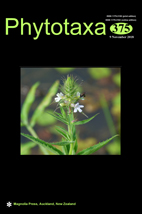Abstract
A total of over 100 accessions representing 11 species of Juniperus in Iran using multiple DNA regions were included in phylogenetic analyses. Analyses of four plastid intergenic spacers (petN-psbM, trnD-trnT, trnL-trnF, trnS-trnG) and nrDNA ITS sequences retrieved Juniperus in Iran as a monophyletic group with two clades corresponding to sections Juniperus and Sabina. Our data support the recognition of J. communis, J. deltoides, J. foetidissima, J. polycarpos var. polycarpos and var. turcomanica, J. sabina and J. seravschanica in Iran. Based on sequences from nrDNA ITS, plastid petN-psbM and single copy nuclear gene LHCA, specimens from the SE Iran that were previously considered to be a part of the J. excelsa complex were shown to be J. seravschanica. Samples from NE Iran were found to be J. polycarpos var. turcomanica and specimens from NW Iran were shown to be J. polycarpos var. polycarpos. Plants belonging to the J. excelsa complex from SW Iran appear to be of hybrid origin between J. polycarpos from N Iran and J. seravschanica from SE Iran. None of the Juniperus samples from Iran were found to be J. excelsa s str., as compared with typical samples from Greece. The sequence data from nrDNA ITS, plastid petN-psbM, trnD-trnT, trnL-trnF, trnS-trnG and single copy nuclear genes (LHCA4, maldehy, myb, CnAIP3 and 4CL) were utilized in this study to identify Iranian samples R, U, K as J. seravschanica.

